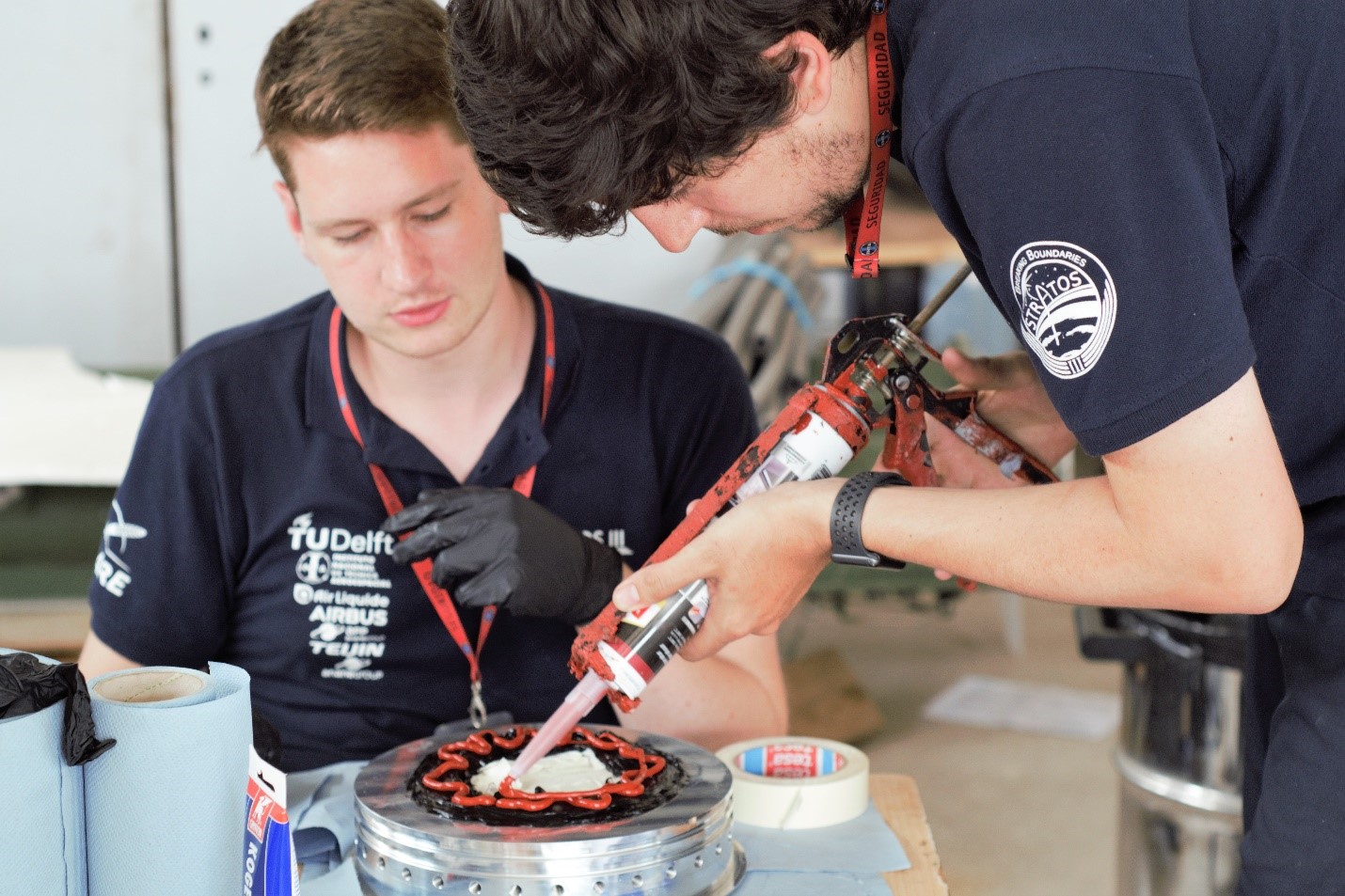
In this post we would like to focus on the engine that powers Stratos III, the DHX-400 Nimbus. This engine is the most powerful hybrid rocket engine built by students. To get the combustion of the Nimbus going, it uses a liquid oxidizer – laughing gas – and a solid fuel. The fuel consists of a mixture of paraffin, sorbitol and aluminum powder, which are all edible!
The nitrous oxide is mixed with the solid fuel using an efficient swirling injector with 167 holes with a diameter of 1.5 mm. The swirl is achieved by having all holes drilled slightly inclined. This small plate fits perfectly in the injector manifold. The manifold is the bulkhead on the top of the engine and is connected to the feed system of the oxidizer tank. This part must hold the engine together under high pressure loads while 6 kg/s of nitrous oxide flows through it. This requires a very precisely machined part which is why we use the expertise and machinery of CNC Verspanen. This Dutch company is a leader in high precision metal processing and with their help we manufactured the injector manifold.
When the Nimbus is ignited, the pressure in the combustion chamber rises rapidly to around 30 bars. This is pressure equivalent to the pressure at 300 meters under water! Of course, all hot combustion gases must be kept in the combustion chamber to prevent failure of the engine. For this, we rely on our partner RADA Seals, which provides all O-rings used in Stratos III. RADA is one of our oldest sponsors which does not only support Stratos, but also other research teams within DARE. To protect the O-rings from the extreme heat in the combustion chamber, of a few hundreds of degrees Celsius, we apply high temperature silicone to the injector manifold.
Next to the scientific payload, launched by Stratos III, we also like to receive data regarding the performance of the Nimbus. This not only serves as a safety measure, but also to learn from for future designs. In the past, all pressure sensors used in the combustion chamber and oxidizer tank were provided by our partner JUMO, which makes high quality measurement equipment
With the help of all these partners Stratos III is getting one step closer to its launch. The first launch attempt is planned for Friday the 20th of July at 20:00 so save the date and don’t forget to watch the live stream!
by Fabio Kerstens


